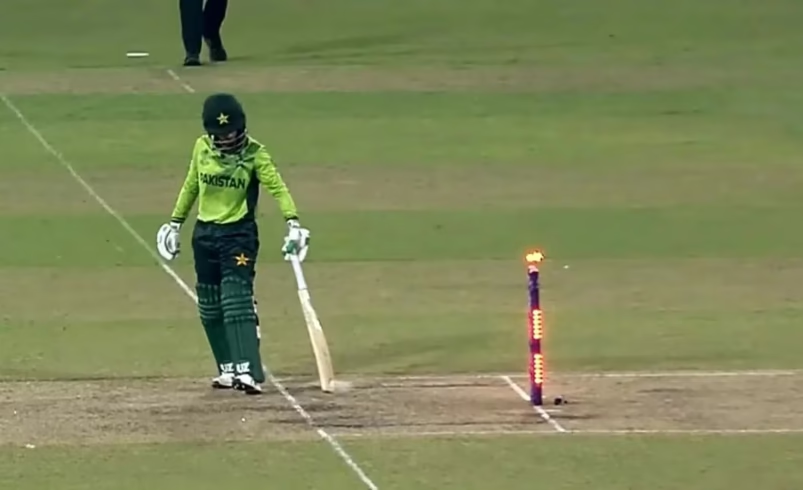MCC settles India-Pakistan run-out controversy with clear ruling
- October 7, 2025
- 0

The Marylebone Cricket Club (MCC), the guardian of cricket’s laws, has addressed the recent debate surrounding Muneeba Ali’s run-out during the India vs Pakistan match. The club confirmed that the third umpire’s decision to declare the batter out was consistent with the rules, offering a detailed explanation of how the ‘bouncing bat’ law applies in such situations.
The controversy began when Muneeba Ali was ruled run out despite appearing to have her bat grounded behind the crease. The MCC clarified that although her bat made contact with the ground, she was not in motion—neither running nor diving—toward her crease when the wicket was broken. According to Law 29.1 of cricket, a batter is considered safe only if some part of their body or bat is grounded behind the popping crease while in active motion toward it at the moment of dismissal.
The incident reignited discussions about what constitutes being “in” under cricket’s complex run-out laws. The MCC explained that once a batter has completed their run and is stationary outside their crease, they are no longer protected if their bat or body loses contact with the ground when the stumps are disturbed. This interpretation ensures consistency across similar scenarios and prevents confusion over whether a “bouncing” or lifted bat can still offer safety once movement has ceased.
In Muneeba Ali’s case, while her bat had touched down behind the line earlier, it was momentarily airborne when the wicket was broken—and she was not attempting to regain her ground at that instant. The MCC emphasized that this detail made her dismissal legitimate under existing laws. The clarification effectively supports the third umpire’s original call and removes ambiguity about how such moments should be judged in future matches.
This ruling serves as an important reference for umpires and players alike, particularly in high-pressure contests where split-second decisions can influence outcomes. By reaffirming how Law 29 should be interpreted, the MCC aims to minimize disputes over similar dismissals going forward. It also underscores the importance of players maintaining awareness of their position relative to the crease until play is clearly complete.
The MCC frequently reviews its laws to ensure fairness and transparency within the game. Its latest clarification reinforces its commitment to upholding consistency across international competitions while educating fans about nuanced aspects of cricketing rules. The explanation surrounding Muneeba Ali’s run-out highlights how even minor technicalities can shape major match moments between rival teams like India and Pakistan.
In conclusion, by confirming that Muneeba Ali’s dismissal adhered to established law, the MCC has effectively closed debate on one of cricket’s most discussed recent incidents. The decision not only validates umpiring standards but also brings renewed understanding of how precision and timing define safety at the crease under modern interpretations of cricket law.